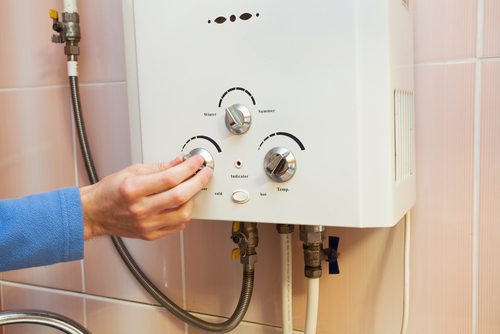Effective Techniques for Maintaining Your Home's Hot Water SystemEfficient Strategies for Maintaining Your Home's Hot Water System
Effective Techniques for Maintaining Your Home's Hot Water SystemEfficient Strategies for Maintaining Your Home's Hot Water System
Blog Article
Nearly everybody maintains their personal thinking in relation to Tips on Maintaining a Water Heater.

Warm water is essential for daily comfort, whether it's for a revitalizing shower or washing meals. To guarantee your warm water system runs successfully and lasts much longer, normal maintenance is key. This short article offers practical suggestions and understandings on exactly how to maintain your home's hot water system to prevent interruptions and expensive repairs.
Intro
Keeping your home's warm water system might appear overwhelming, but with a couple of straightforward actions, you can guarantee it runs efficiently for several years ahead. This overview covers every little thing from comprehending your hot water system to DIY maintenance ideas and knowing when to hire expert assistance.
Significance of Maintaining Your Warm Water System
Normal maintenance not only expands the life-span of your hot water system but additionally guarantees it runs successfully. Ignoring maintenance can lead to decreased efficiency, greater power expenses, and also premature failure of the system.
Signs Your Hot Water System Demands Upkeep
Understanding when your hot water system needs focus can protect against significant problems. Keep an eye out for indicators such as irregular water temperature level, strange noises from the heater, or rusty water.
Understanding Your Hot Water System
Prior to diving right into upkeep jobs, it's handy to recognize the standard parts of your warm water system. Commonly, this consists of the hot water heater itself, pipelines, anode poles, and temperature level controls.
Month-to-month Upkeep Tasks
Routine regular monthly checks can assist catch minor issues prior to they rise.
Purging the Hot Water Heater
Flushing your water heater eliminates sediment buildup, improving performance and extending its life.
Checking and Changing Anode Rods
Anode rods prevent deterioration inside the tank. Inspecting and changing them when worn out is crucial.
Checking and Adjusting Temperature Level Settings
Adjusting the temperature setups ensures ideal performance and safety and security.
DIY Tips for Upkeep
You can do several upkeep tasks on your own to keep your warm water system in top problem.
Checking for Leakages
Frequently inspect pipes and links for leakages, as these can result in water damages and higher expenses.
Testing Stress Relief Valves
Testing the stress relief valve ensures it operates properly and protects against extreme stress buildup.
Shielding Pipes
Shielding hot water pipes lowers warm loss and can conserve energy.
When to Call an Expert
While do it yourself maintenance is valuable, some issues call for professional competence.
Facility Problems Calling For Expert Aid
Instances include major leakages, electrical issues, or if your hot water heater is consistently underperforming.
Routine Expert Upkeep Conveniences
Professional upkeep can consist of comprehensive assessments, tune-ups, and making certain conformity with security criteria.
Verdict
Normal upkeep of your home's hot water system is important for effectiveness, durability, and price financial savings. By following these suggestions and understanding when to look for specialist help, you can guarantee a dependable supply of warm water without unanticipated interruptions.
How to Maintain an Instant Hot Water Heater
Before tinkering with your hot water heater, make sure that it’s not powered on. You also have to turn off the main circuit breaker and shut off the main gas line to prevent accidents. Also turn off the water valves connected to your unit to prevent water from flowing into and out of the appliance. 2. When you’re done, you have to detach the purge valves’ caps. These look like the letter “T” and are situated on either side of the water valves. Doing so will release any pressure that has accumulated inside the valves while at the same time avoid hot water from shooting out and burning your skin. 3. When the purge valves’ caps are removed, you have to connect your hosing lines to the valves. Your unit should have come with three hoses but if it didn’t, you can purchase these things from any hardware or home repair shops. You can also get them from retail stores that sell water heating systems. Read the user’s manual and follow it to complete this task properly. When the hosing lines are connected, open the purge port’s valves. 4. You should never use harsh chemical cleaners or solutions when cleaning your unit. Make use of white vinegar instead. It should be undiluted and you’ll probably use about 2 gallons. 5. Now flush your water heater. This task should probably take about 40 minutes. We can’t give you specific directions for this because the procedure is carried out depending on the type, model and brand of your heater. With that being said, refer to the user’s manual. 6. When you’re done draining the unit, you have to turn off the purge port valves again. Remove the hosing lines that you earlier installed on each of the water valves. Put the valve caps (purge port) back in their respective places and be very careful so as not to damage the rubber discs that are found inside these caps. 7. Now that everything’s back in place, check your user’s manual again to find out how to reactivate your water heating system. 8. Once it is working, turn one of your hot water faucets on just to let air pass through the heater’s water supply pipes. Leave the tap on until water flows smoothly out of it. https://www.orrplumbing.com/blog/2014/september/how-to-maintain-an-instant-hot-water-heater/

We hope you enjoyed reading our piece about Tips on Maintaining a Water Heater. Thanks a ton for taking time to read through our post. Remember to take the time to promote this article if you liked it. Thanks a lot for your time invested reading it.
Schedule An Appointment Report this page